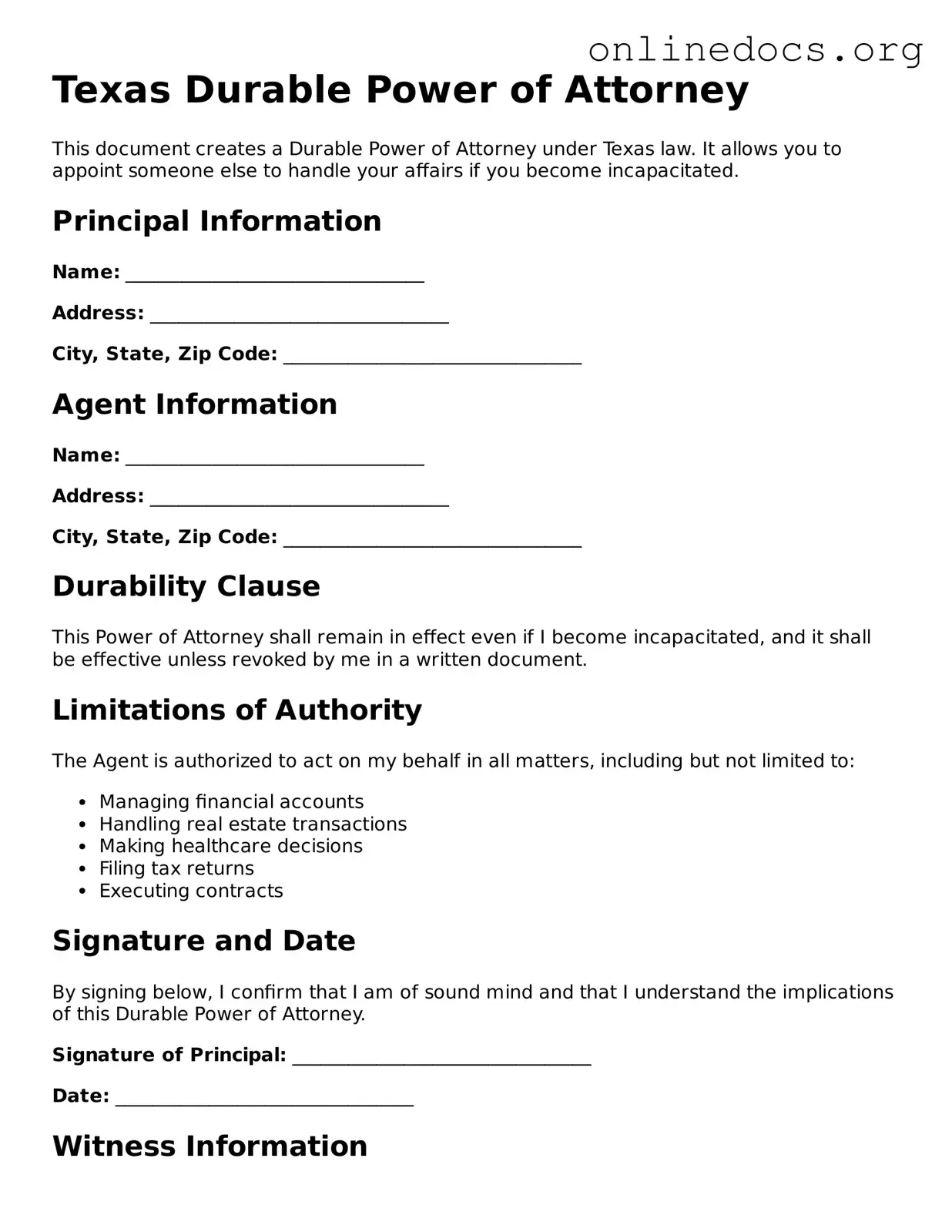The Texas Medical Power of Attorney is a document that allows an individual to designate someone to make medical decisions on their behalf if they become incapacitated. Like the Durable Power of Attorney, it grants authority to another person to act in specific situations, but its focus is solely on healthcare decisions. This document ensures that the individual's medical preferences are honored when they cannot communicate them directly.
The Living Will is another important document that shares similarities with the Durable Power of Attorney. It outlines an individual's wishes regarding medical treatment in situations where they are terminally ill or unable to express their preferences. While the Durable Power of Attorney grants someone the authority to make decisions, the Living Will specifies the type of care the individual desires, ensuring their wishes are respected even when they cannot voice them.
The Financial Power of Attorney serves a purpose akin to the Durable Power of Attorney, but it is specifically tailored for financial matters. This document allows a designated person to manage financial affairs, such as paying bills or handling investments, on behalf of the individual. Both documents empower another person to act, but the Financial Power of Attorney focuses exclusively on monetary decisions.
The Guardianship document provides a legal framework for appointing someone to make decisions for an individual who is unable to do so due to incapacity. Similar to the Durable Power of Attorney, it involves transferring decision-making authority, but guardianship typically requires court approval and oversight. This document is often used in more severe cases where the individual cannot manage any aspect of their life.
To ensure a smooth rental process, it's essential to complete a comprehensive Lease Agreement form. You can find a useful resource by visiting this blank Lease Agreement form.
The Trust Agreement is another document that allows for the management of an individual's assets, similar to the Durable Power of Attorney. A trust can specify how assets are to be handled during the individual's lifetime and after their passing. While the Durable Power of Attorney allows someone to act on behalf of the individual, a trust establishes a separate legal entity that holds and manages assets, often providing more control over distribution.
The Advance Directive combines elements of the Medical Power of Attorney and Living Will, allowing individuals to outline their healthcare preferences and appoint a decision-maker. Like the Durable Power of Attorney, it ensures that the individual's wishes are respected, but it specifically addresses medical scenarios. This document provides comprehensive guidance for healthcare providers and family members during critical moments.
The Declaration of Guardian for Myself is a document that allows individuals to name someone to act as their guardian in the event of their incapacity. Similar to the Durable Power of Attorney, it ensures that the individual's preferences are honored regarding who will make decisions on their behalf. This document provides peace of mind, knowing that a trusted person will be in charge if the need arises.
The Authorization for Release of Medical Records allows individuals to grant permission for their medical information to be shared with designated persons. While it does not confer decision-making authority like the Durable Power of Attorney, it is essential for ensuring that the appointed person can access necessary information to make informed decisions about healthcare. Both documents work together to facilitate effective communication and decision-making.
The HIPAA Release Form is a specific type of authorization that allows individuals to designate who can access their health information under the Health Insurance Portability and Accountability Act. Similar to the Authorization for Release of Medical Records, it ensures that the appointed person can obtain vital medical information. This document complements the Durable Power of Attorney by ensuring that the designated decision-maker has the necessary information to act effectively.
